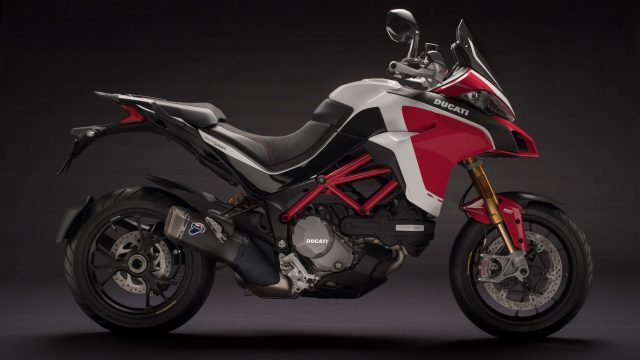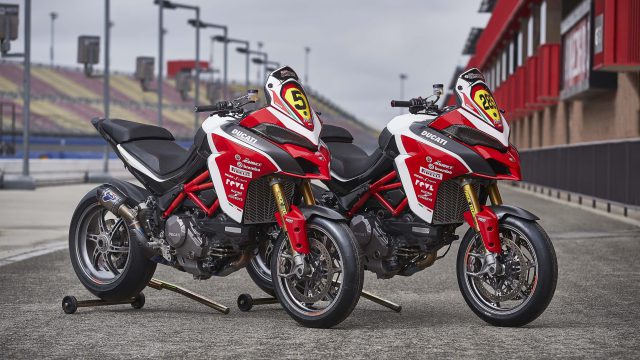Ducati aims to reclaim the Pikes Peak crown, returns to the Clouds with souped-up Multistrada 1260
Ducati is back in the game for the Race to the Clouds with a new rendition of the Multistrada 1260 Pikes Peak Edition, aiming to claw back the crown. On June 24th, former record holder Carlin Dunne and middleweight class winner Codie Vahsholtz are going to battle the 156 turns hoping to show once more that Ducati is the king of the mountain.
Ducati’s record lasted for several years, in the absence of true competition from other manufacturers. In fact, Ducati has been the sole major manufacturer to make professional efforts in this amateur, albeit highly prestigious event.
After showing the world how it’s done, Ducati started to enjoy opposition from brands such as Honda, Kawasaki and KTM. Last year, KTM’s Chris Fillmore broke Dunne’s previous record, posting a spectacular 9:49.625, aboard a prepped 1290 Super Duke R. Making things even more interesting, Fillmore’s teammate Rennie Scaysbrook also dropped under the (formerly) magical 10-minute barrier, causing Ducati to stop reveling in their past victories for good.

This year’s Multistrada 1260 S Pikes Peak packs 158 hp and a peak torque of 129.5 Nm, of which 85% are already available under the 3,500 rpm bar. However, it looks like Ducati has not solved the footpeg clearance, a problem that still prevents riders from leaning properly around the corners. This year, the machine is 3 kg (6.6 lb) lighter and is equipped with race-ready Ohlins suspensions at both ends, plus a street-legal, race-inspired Termignoni carbon silencer.
For a bike that’s supposed to tackle an unforgiving, difficult uphill race, 206 kg (454 lb) may seem a bit on the heavy side, but let’s not forget the past exploits of the Multistrada at Pikes Peak.
Something tells us that now, with KTM holding the record, the Race to the Clouds has just become a whole lot more interesting. After all, this amateur race can yield a lot of lucrative ideas… What could stop KTM from releasing a Pikes Peak Super Duke R?







